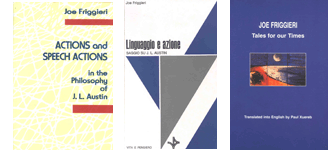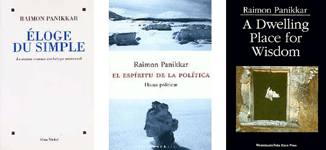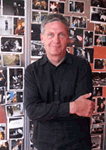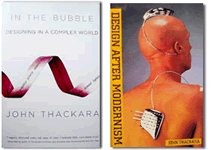“…after ‘value for money’ and ‘value for time’
the third design and marketing challenge today is ‘value for sense’…”
the third design and marketing challenge today is ‘value for sense’…”
Simonetta Carbonaro


Simonetta Carbonaro is an expert in Consumer Psychology, Innovation Management and Strategic Design. She is currently professor of Design Management and researcher in Humanistic Marketing at the Swedish Textile School of the Borås University College. She is also a member of the scientific committee at the postgraduate design school Domus Academy in Milan. As a consultant she has been collaborating in the brand building and the strategic design management of renowned European companies. Since 1999 she is partner of Realise.
The Design of Prosperity
The way out of the “more-of-the-same-design” trap means getting back to the basics of the design process and a fresh look at how design can interpret and influence the economic, social, political and cultural aspects of our lives and thus contribute to the prosperity of our Western societies.
“…my sole ambition is to predict the present:
new rules are playing into the economy of networks …”
new rules are playing into the economy of networks …”
Derrick de Kerckhove



Derrick de Kerckhove is director of the McLuhan Program in Culture & Technology and Professor at the University of Toronto.
He is author of e.g. The Skin of Culture and Connected Intelligence. De Kerckhove has contributed to the architecture of collaborative professional software and creativity workshops now being used by and for various business and educational situations.
Connecting intelligence to design and implement prosperity
Prosperity depends more than ever on fostering and harvesting people’s creativity and collaboration. Using examples of social software De Kerkhove , will explore what new rules play into the economy of networks. Policy should consider strategies to accelerate and connect intelligences within and among educational (key area), economic and cultural realms. By paying attention to new developments in social software people can appreciate the intelligence that goes into the invention and the use of software. Linux, for example, has provided among the first evident examples of connected intelligence in action.
Open Source and other public and social software are changing the playing field of economy. The new economy of networks does not eliminate the needs and practices of the old, but it modifies some of the rules. For example, in an economy of networks, many things tend to be free. It is service that counts. The big contradiction here is that mammoth monopolies and the insidious return of vertical integration by the back door are threatening both service and innovation in the information and communication industries. Using the metaphor of connected intelligence, with examples such as Wikipedia and Creative Commons, de Kerckhove explores possible strategies to combine competitivity with collaboration, and thus promote creativity and prosperity.
“..after the time of Design comes the time of Art ..”
Nathalie du Pasquier



Nathalie du Pasquier is a founding member of the Memphis Group designing numerous fabrics and objects. Since 1987 she dedicates herself exclusively to painting. Her work falls within the tradition of the "metaphysical" still life. Her intent is to release the visual marvels hidden beneath the surface of things. Nathalie Du Pasquier is resident artist at Galleria Antonio Colombo Milan and at Le Cadre Gallery, Hong Kong. She works periodically on sculptural works in Limoges at CRAFT and collaborated to the project book by Leonard Koren entitled "Arranging things" in Spring 2003.
Arranging Things
Will be shown as a Video-clip
“…People need to believe that things can improve,
that their life can take a turn for the better. Can we design such hope and keep it alive?..”
that their life can take a turn for the better. Can we design such hope and keep it alive?..”
Joe Friggieri


Joe Friggieri is Professor of Philosophy and Head of the Philosophy Department at the University of Malta. He is a poet, playwright, theatre-director and a regular contributor to cultural programmes on radio and television. In addition to his literary output, Joe Friggieri has also written works on the Philosophy of Mind and Aesthetics. His short stories, originally published in Maltese, have been translated into English, French and German, and favourably reviewed in the Times Literary Supplement.
The design of prosperity: beauty, happiness and hope
Assuming that we all subscribe to the admittedly vague principle that the primary goal of design is to make people's lives better, we still need to ask ourselves: in what ways can that goal be reached? How exactly can design improve the quality of people's lives. Joe Friggieri looks at three types of answer that have been suggested by contemporary designers reflecting on their work. The differences between them depend on whether they highlight the aesthetic, psychological or ethical consequences of good design. The aim of the discussion is to show that the three types of theory are not - or need not be - mutually exclusive, and that, ideally, 'design for prosperity' will succeed in combining the benefits identified by each one of them.
“…ethical and ecological products don’t need to look boring, nor ugly…”
Safia Minney

Safia Minney is founder and director of Fair Trade company and the environmental fashion and lifestyle label People Tree. Her companies work in partnership with producers spread across Asia, Africa and Latin America, helping some of the world’s most marginalised communities to improve their lives through fair trade. People Tree’s products are stocked in over 60 stores across Europe, including Topshop’s flagship store and Selfridges in London. Safia was voted one of the world’s most “Outstanding Social Entrepreneurs”, a title awarded by the Schwab Foundation.
People Tree, Fair Trade and Fashion Design: the Aesthetics of Ethics
How to turn a life-long interest in environmental, trade and social justice issues from a lifestyle into a Fair Trade business, providing proof of how ethical and ecological products don’t necessarily need to look boring. People Tree’s designers help to quash the idea that fair trade fashion is ugly and undesirable.
“...evoking the need for change, poetically prefiguring reality
and suggesting alternative lifestyles...“
and suggesting alternative lifestyles...“
Lucy Orta


Lucy Orta is one of the most unusual fashion artists working today. Since the beginning of the 90’s Lucy has realized what she called “architectures with soul”. Alongside this activity and feeding into her work Lucy also holds the first Rootstein Hopkins Chair of Fashion at London College of Fashion. She also founded the Master in Industrial Design ‘Man + Humanity’ at the Design Academy in Eindhoven, a program that stimulates socially driven and sustainable design solutions in the form of systems and products.
Design with Soul and Social Link
The design of objects that respond to a critical and constructive gaze on the most sensitive areas of society, evoking the need for change, poetically prefiguring reality and suggesting alternative life styles.
“…not Happiness nor Wealth,
but Joy and Beauty are two of the major people’s demands…”
but Joy and Beauty are two of the major people’s demands…”
Raimon Panikkar


Raimon Panikkar is the co-director of the Parliament of the World’s Religions. He has been professor at the Universities of Madrid, Rome, Harvard and California, where he has taught Indian culture, History and Philosophy of Religions. He has published more than 40 books and he has created the Fundación Vivarium, dedicated to promoting the dialogue between the religions of the world.
Beyond Prosperity
The materialistic aspects connected with the concept of prosperity, progress, comfort and growth are problematic. Neglecting human need for spirituality is one of the major problems of our Western civilizations. Artists have the task to translate and transfer the sublime into their work. Not happiness nor wealth, but Joy and Beauty are two of major aspirations everyone seems to be searching for.
“…while the fossil-fuel era is entering its sunset century, and a new energy regime
is being born, Europe has become a giant laboratory for rethinking humanity’s future…”
is being born, Europe has become a giant laboratory for rethinking humanity’s future…”
Jeremy Rifkin


Jeremy Rifkin, president of the Foundation on Economic Trends, is one of the most well-known experts on how scientific and technological changes impact the economy, workforce, society, and the environment.Rifkin has been influential in shaping public policy in the United States. He is adviser to European heads of state, the European Commission and Europe’s leading companies.
Rethinking humanity's future. The end of the American Dream and the beginning of a New Energy Era
Europe’s Vision of the Future is quietly eclipsing the American Dream. Rifkin also brings first hand information about how new economies powered by renewable energy sources will fundamentally change the nature of our market, political and social institutions.
“…What is the ‘why’ of innovation? What is the ‘how’ of design?…”
John Thackara


John Thackara has long been a major force in design. His last book In the Bubble is the first strong, thoroughly documented statement on the importance of the local and the embedded in our fluid, hyper-connected world. He is the director of Doors of Perception (Doors), a design futures network with offices in France and Bangalore. He organises collaborative innovation projects in which designers, together with grassroots innovators and citizens, develop new service concepts and prototypes in real locations. He also helps cities and regions build new institutions that enable designers, other specialists, and citizens to learn and work together in new ways.
Power Laws of Innovation
Lots of things need to be redesigned in ways that make good business but without adding to today's flood of pointless products. John Thackara made up ten power laws of innovation that could change the bigger picture as well as the quality of our every-day life.
“..Creativity demands a state of non-control,
of boundless courage and that is why conformism is creativity's worst enemy..”
of boundless courage and that is why conformism is creativity's worst enemy..”
Oliviero Toscani




Oliviero Toscani, is the renowned photographer who built "United Colors of Benetton" that was to become one of the world's most recognized brand. Renowned as the creative force behind some of the world's most successful magazines and brands, Including corporate images and advertising campaigns over the years, for Esprit, Valentino, Chanel, Fiorucci, Prenatal, and many more. He is also the author of communication campaigns for distinguished institutions including the United Nations. Toscani's work has been exhibited at over twenty major museums around the world.
Creativity is the risk and opportunity of the real present
To be creative means to have no certainties, it means doing the opposite of what every pre-established system wants you to do.
To be creative means to try to do something that has never been done, to build something that can be of enormous value in the future
out of nothing. Creativity demands a state of non-control, of limitless courage. And that is why conformism is creativity's worst enemy.
“…Marketing has not yet quite grasped how to properly deal with “sense” as a new customer
need and continues to hold with nearly messianic conviction to the dogma of customer orientation…”
need and continues to hold with nearly messianic conviction to the dogma of customer orientation…”
Christian Votava


Christian Votava is an expert in the areas of Strategy, value-added marketing, innovation and organisational efficiency and is developing new marketing and market research methodologies for saturated markets. He holds a doctorate in chemistry and an MBA, and was active for more than 10 years in leading marketing and operating positions in Europe and the USA. He was a consultant at companies like A.T. Kearney and Logika AG. Today he is a Partner at REALISE, where he empowers financial and consumer good companies to operate safely and successfully in rapidly changing and highly competitive markets. In addition to project work, he assists business manager and boards with their strategic and tactical decisions.
| The Swedish School of Textile 501 90 Borås Sweden | Agneta Nordlund Andersson | +46 33 435 4149 | www.hb.se/ths |